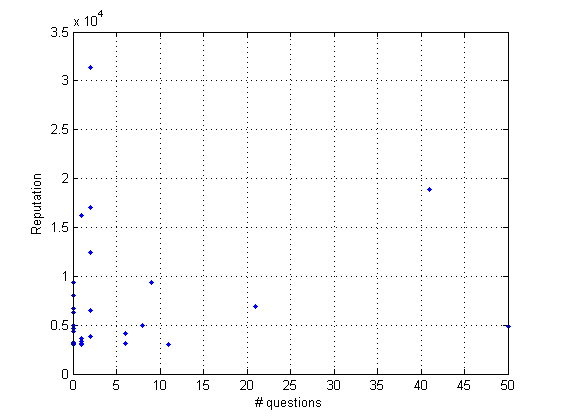[The initial pun turned into a look at observable variables showing trends and clustering]
Outlier detection is a radical task in signal processing. The user Matt L. has about three times more total reputation and year reputation than the second best.
- What are his secrets?
- How can they benefit to the average crowd?
Nota: I was thinking about proposing a humour tag. There was a DSP humor cartoon contest at ICASSP 2000. This meta post is a way to test the sensitivity of the audience:






